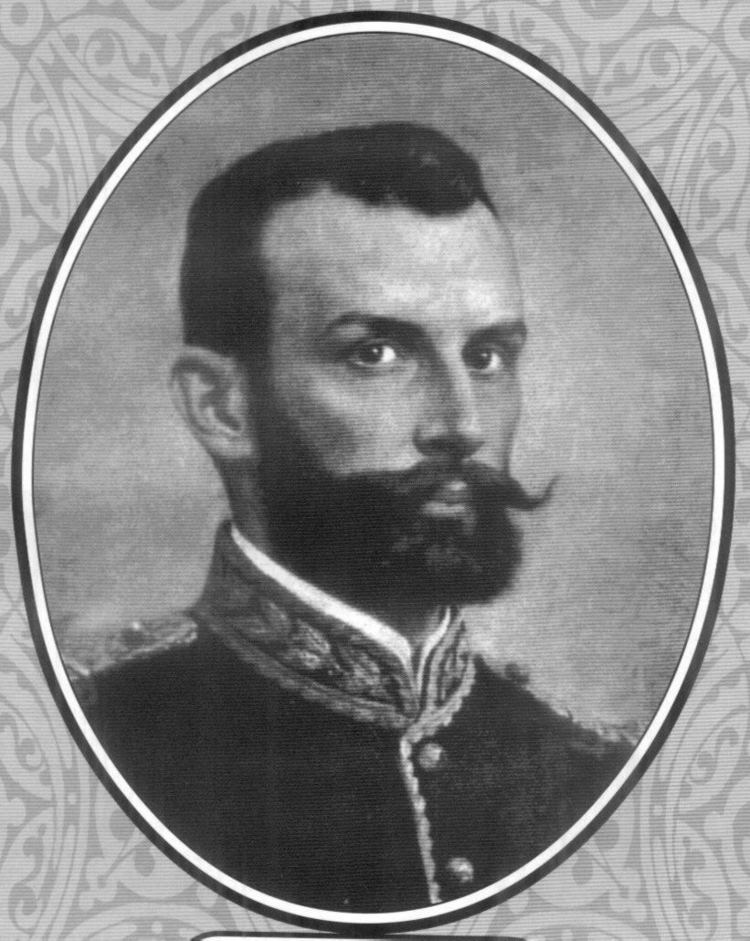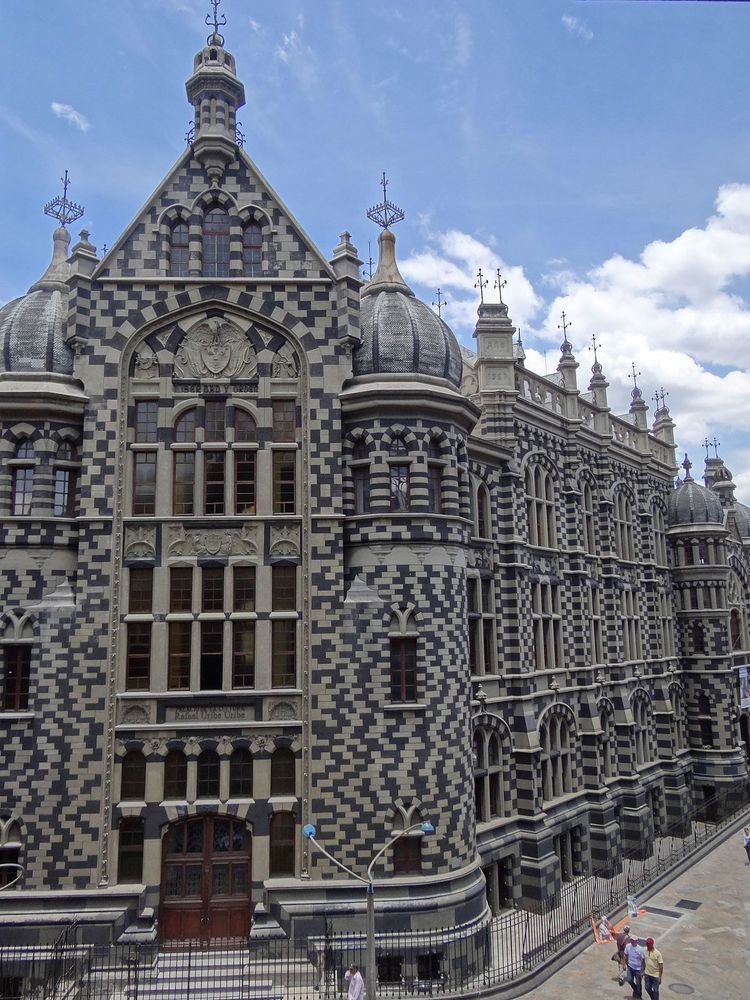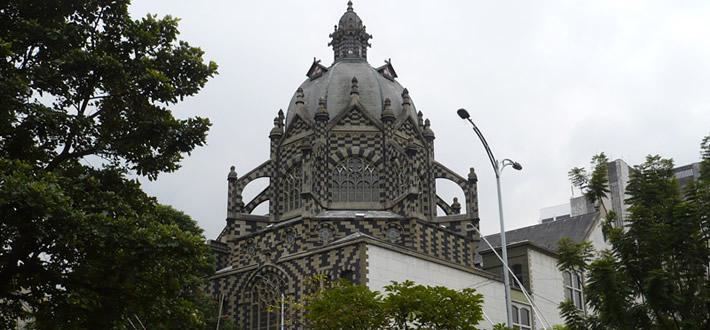Name Rafael Uribe Succeeded by Luis Tanco Argaez | Nationality Colombian Party Colombian Liberal Party Political party Liberal | |
 | ||
Preceded by Antonio Jose Uribe Gaviria Full Name Rafael Victor Zenon Uribe Uribe Died 15 October 1914(1914-10-15) (aged 55)Bogota, D.C., Colombia Spouse Sixta Gaviria (m. 1886–1914) Assassinated October 15, 1914, Bogota, Colombia Resting place Central Cemetery of Bogota Similar People Pedro Nel Ospina Vazquez, Ramon Gonzalez Valencia, Enrique Olaya Herrera, Jorge Eliecer Gaitan, Santiago Perez de Manosalbas | ||
Eps comfenalco universidad libre cali cl nica rafael uribe uribe avenida vasquez cobo peatonal
Rafael Victor Zenón Uribe Uribe (born April 12, 1859 – died October 15, 1914 in Bogotá) was a Colombian lawyer, journalist, and general in the liberal party rebel army.
Contents
- Eps comfenalco universidad libre cali cl nica rafael uribe uribe avenida vasquez cobo peatonal
- Rafael uribe uribe
- Early years
- Thousand days war
- Santander campaign
- Capture of Conservative Higher Command
- Death
- In popular culture
- References

Uribe Uribe is best known for his political ideas in favor of the establishment of Guild socialism and trade unions in Colombia, his diplomatic work and his support of Colombian coffee growers in fighting diseases such as rust. One of his greatest contributions was, along with Benjamin Herrera, the founding of the Republican University that later became the Free University of Colombia.

The Rafael Uribe Uribe Palace of Culture in Medellín is named after him.

Rafael uribe uribe
Early years

Rafael Uribe Uribe was born in the small town of Valparaíso, in the Sovereign State of Antioquia (Present day Department of Antioquia) at his family's country estate of El Palmar on April 12, 1859. His mother educated him at home and he was reportedly a shy boy. In 1871 Uribe was accepted to the University of Antioquia, then attended a military school called School of the State, where he received martial training. He also studied sporadically in Buga, Capital of the Sovereign State of Cauca (Present day Department of Valle del Cauca) where he also joined the Liberal rebels of Cauca during the Colombian Civil War of 1876 and was wounded in combat.

In 1880 Uribe graduated from Our Lady of the Rosary University as a lawyer and the next year worked as Attorney General of Antioquia. He also became a Professor in constitutional law and political economy.

In 1885 Uribe participated in another civil war, in which he was involved in the execution of a subordinate for disobedience. However, the Conservatives in power absolved him.
Thousand days war
In 1895 Uribe Uribe participated in the Civil War (1895), but was defeated in the Battle of La Tribuna by General Rafael Reyes. Uribe escaped through the Magdalena River and was later captured in the town of Santa Cruz de Mompox. He was imprisoned in the Cárcel de San Diego, Cartagena de Indias.
After being granted a pardon, Uribe became a Deputy to the Chamber of Representative in which he became a critic of the Regeneration. The Regeneration advocated for centralism, the restriction of civil liberties and an established accord with the Roman Catholic Church. The main promoters of this movement were President Rafael Nuñez (1880–1888) and Miguel Antonio Caro, (1892–1898).
During these years Uribe also founded a newspaper called El Autonomista ("The Autonomist") managing a publicity campaign against the conservative government and attacked members of his own party, most notably Aquileo Parra. Due to these printings, Uribe gained significant prominence in Liberal Party, participating also in the uprising of October 20, 1899 which triggered the Thousand Days War.
Santander campaign
During the Santander military campaign between October 1899 and August 1900, Uribe commanded the liberal forces in the Battle of Bucaramanga (November 13–14, 1899), where he was defeated. He then organized a retreat to the city of Cúcuta, where he joined forces with Liberal general Benjamín Herrera.
On December 15, 1899, while en route to Ocaña his troops were ambushed at a location known as La Amarilla initiating the Battle of Peralonso. The battle ended the next day with the victory of Uribe over the conservatives. Uribe had attacked the bridge over the Peralonso River. For this action he was deemed the "Hero of Peralonso". Documents left by the retreating army later showed that its commander Vicente Villamizar had orders to let the liberal army pass to prolong the war and to give the government an excuse to confiscate property and issue more paper money. Moreover, before starting the battle, the government army provided the rebels with two mules loaded with ammunition, of which the liberals had little.
Capture of Conservative Higher Command
On February 2, 1900 Uribe Uribe's troops captured the Conservative Higher Command in a Hacienda named Teran. Between May 11 and May 15, 1900 he fought in the Battle of Palonegro, commanding his own division. The conservatives led by Próspero Pinzón won the battle and Uribe crossed the border to Venezuela. Conservative troops under the command of general Rangel Garbiras managed to invade Venezuela and cut the aid of Cipriano Castro government to the Liberals but were defeated by general Uribe in the battle of San Cristobal (July 29,1901).
Between 1901 and 1902 Uribe Uribe alternated military activities with peace initiatives which were not taken into account by the then conservative government of José Manuel Marroquín. General Uribe saw that the Liberals would not be able to defeat the Conservatives, and therefore was inclined to surrender, albeit with certain conditions. On June 12, 1902 the government offered amnesty, and the liberal rebels began to demobilize. Uribe surrendered in the Hacienda Neerlandia on October 24, 1902. He began issuing pamphlets promoting the conservative government, and soon took a lower public profile.
Death
Rafael Uribe Uribe died on October 15, 1914 after he was attacked with axes the day before by two workers named Jesús Carvajal and Leovigildo Galarza. Local authorities believed it to be an act of terrorism, but those suspicions were never confirmed.
In popular culture
According to an interview given by Gabriel García Márquez to Plinio Apuleyo Mendoza in his book El Olor de la Guayaba (The Guava's Smell), the character of Colonel Aureliano Buendía in One Hundred Years of Solitude was loosely based on Rafael Uribe Uribe. García Márquez's grandfather was under Uribe Uribe's command in the Thousand Days War.
The 18th locality of the Capital District of the capital city Bogotá, Colombia is named for Uribe.
